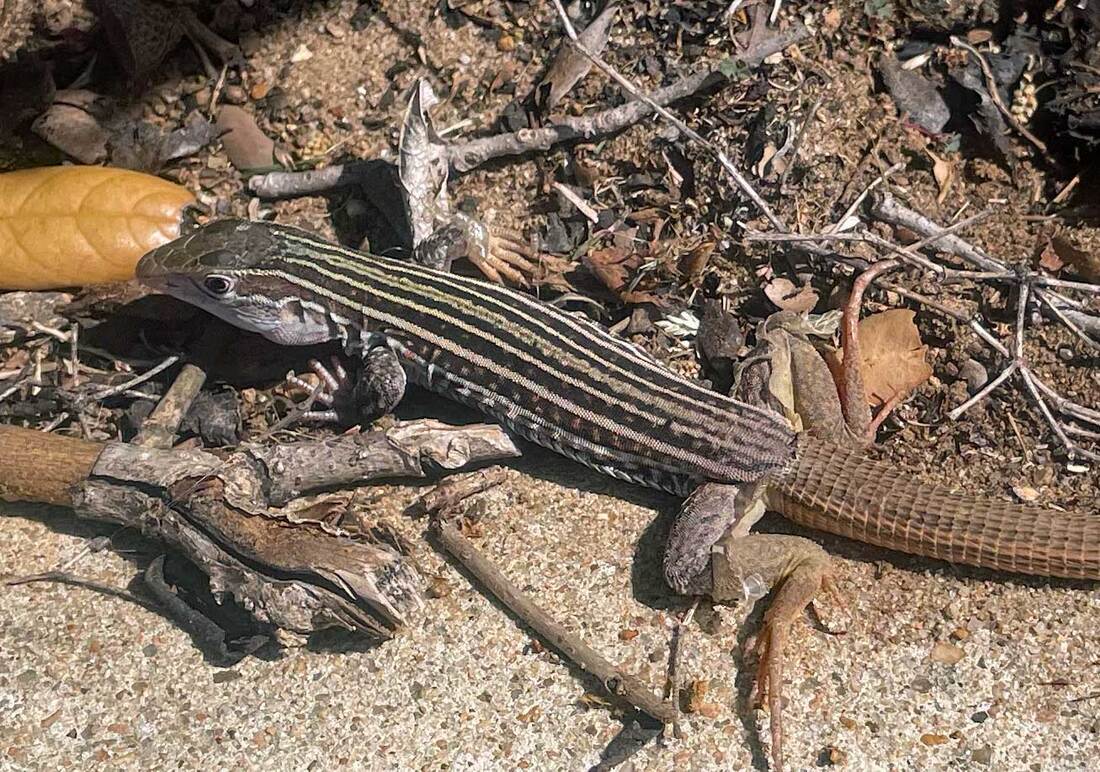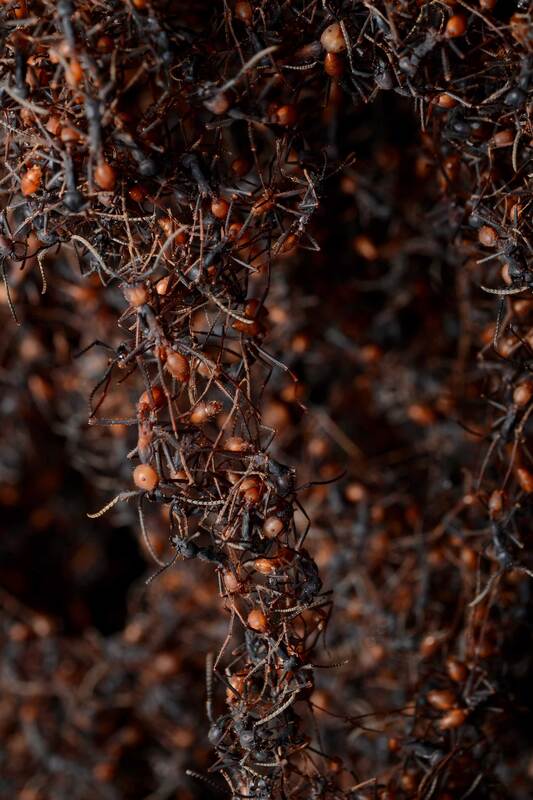|
Trish and I recently enjoyed a week-long trip to Washington to explore some of the northwest coast and visit our son and daughter-in-law. One of our more colorful stops was the tulip fields of the Skagit Valley north of Seattle. This scene is from the Roozengaarde farm.
Each year, about 1,000 acres of tulips are grown in Skagit County, producing about 20 million bulbs that are harvested each summer. Another 75 million cut flowers are raised in greenhouses and fields. This is about 75% of all tulip production in the US. Every April they have the famous Tulip Festival, drawing about 300,000 attendees (including us this year). Surprisingly, the tulip bulbs and flowers generate about $20 million in gross income, but the month-long Tulip Festival generates $65 million for the county. The tulip, which is native to Central Asia, is in the lily family, and it is closely related to onions. Over a thousand years ago, tulips were cultivated in the Ottoman Empire (Turkish empire). The first bulbs were taken to Europe in 1556. In 1593, a botanist took tulips to the Netherlands. Tulips became extremely fashionable, and the wealthy paid high prices for them, leading to a period called Tulipomania (from 1634 to 1637). Eventually, tulips became affordable for the working class. They continue to be popular today. Tulips include more than 150 species and over 30,000 varieties. Despite all that, any time Trish tries to plant tulips in our yard, the deer promptly bite them off at the ground level.
0 Comments
Okay, this one is the Big Kahuna of life’s great mysteries. The golden ticket. The pot of gold at the end of the rainbow. The prize at the bottom of a box of Cracker Jacks. The… well, you get it, right? This one’s a big deal. But am I afraid to address it? No!
Actually, this question has been answered by a few great minds. In Monty Python’s The Meaning of Life, a character opens an envelope containing the meaning of life. The character reads the contents: “Well, it's nothing very special. Uh, try to be nice to people, avoid eating fat, read a good book every now and then, get some walking in, and try to live together in peace and harmony with people of all creeds and nations.” Honestly, that’s a pretty good answer, in my opinion. In A Hitchhiker’s Guide to the Galaxy, a giant computer named Deep Thought takes 7.5 million years to contemplate this question, and it finally reveals the answer: 42. If you turn to a dictionary for the meaning of life, you’ll get something like: “The condition that distinguishes animals and plants from inorganic matter, including the capacity for growth, reproduction, functional activity, and continual change preceding death.” But this isn’t very satisfying, is it? The question has been answered in countless ways, and the answers depend on the lens through which a person views the question. Some people think it has to do with our potential and our ideals, and their answer might be: to live your dreams, or to expand your potential in life. Some people consider the biological aspects, and their answer might be: to survive, or to evolve, or to reproduce. Some people are concerned about wisdom, and their answer might be: to learn as many things as possible, or to seek out a reason to live. Some people are most concerned about being good, and their answer might be: to leave the world a better place than you found it, or to be honorable. Some people approach the question in a religious sense, and their answer might be: to understand the mystery of God, or to have a pure soul and experience God. Some people are focused on happiness, and their answer might be: to seek beauty in all its forms, or to enjoy every moment of life. Some people are all about power and self-improvement, and their answer might be: to know and master the world, or to strive for power and superiority. Some people believe that life simply has no meaning, and their answer might be: humans evolved randomly, and therefore there is no purpose or meaning, or… there is no meaning, and that’s what makes life so special. Finally, some people think we shouldn’t even try to answer the question at all… they might say: the answer is too profound and cannot be understood, or… you will never live if you spend all your time seeking the meaning of life. So, what are we to conclude? It seems to me that the answer is different for every person on Earth. You must find your own meaning. Darn it! Then how are we supposed to get it right on the test? Here is my own answer (although it could change as I change): Human life, having evolved by natural selection, has no predetermined meaning. However, we are fortunate to have the cognitive capability to contemplate our existence. Therefore, it would be a shame to squander this amazing evolutionary superpower. Humans are capable of making their own happiness, although the ingredients for such happiness are different for each human, as it should be. Personally, my purpose—the meaning of my life—is to achieve happiness and satisfaction. How? By striving to be a role model for others, by helping those who need my help, by loving my wife, kids, and others in my family, by experiencing and nurturing my awe of the natural world, by creating stories that entertain people, and by learning new and fascinating things. Anyway, there is definitely an answer to this age-old question. There is meaning to life, and it isn’t 42. It is something different for every person. We visited one of our daughters and her family in Texas recently. While waiting outside of a social security office for our daughter to take care of something, I spotted this lizard hunting for insects next to the sidewalk. About ten inches long including the tail, this is a Texas spotted whiptail. They are extremely fast-running lizards and they roam around, darting this way and that, as they hunt for insects. Despite their diminutive size, whiptails can run up to 17 miles per hour (27 kph). Whiptails feed in the heat of the day, often when the temperatures are over 100 degrees F (38 C). Interestingly, the Texas spotted whiptail has contributed (by mating with other whiptail species) to producing two hybrid whiptail species that only have females. You read that correctly... the Chihuahuan spotted whiptail and Laredo striped whiptail species do not have any males at all. These all-female species reproduce by a natural form of cloning called parthenogenesis. Without mating with a male, the female lays fertile eggs, which hatch as clones of the mother. It gets even stranger. Even though these females do not mate with males, they still go through a false mating ritual with other females, physically mounting and pretending to mate. Why? Because this act releases their internal hormones, triggering their production of one to five eggs, each containing a clone of the mother. Photo Credit: Texas spotted whiptail - Stan C. Smith This is a relatively easy one. Let's think about this. People aren’t hobbits—we don’t put round doors on our houses. We don’t put round doors on schools. Gas stations, courthouses, factories, and Walmart stores? Nope, no round doors there. All rectangular. Even the hatches on airplanes and submarines are mostly rectangular, although they do have rounded corners. But a manhole, and the corresponding manhole cover—round as a moon pie. What’s up with that?
As it turns out, there are several reasons. As the saying goes, “safety first.” So, perhaps the most important reason for round manholes is that the covers cannot fall through the hole and bonk someone (presumably a “man”) on the head. A rectangular or a square cover could be turned in such a way as to fall through the hole. And if you’ve never picked up a manhole cover, they are heavy! Here’s another reason. Round covers are easier to fit onto the hole. They don’t have to be turned a certain way, as a square cover would. They’re heavy, remember, so no one wants to turn a manhole cover this way and that to get it to fit. And… you can’t cut yourself on the corner of a manhole cover if it ain’t got no corners (safety first, remember?). And finally… as if this weren’t enough reasons, round manhole covers are easier to move from one place to another. Instead of having two people carry one, a single person can simply roll it. Did you know colonies of army ants build complex nests using their own bodies? Most colonial ants excavate permanent nests in the ground or in structures like dead trees, but army ants make temporary nests with their own bodies! The name "army ant" actually refers to about 200 species, not all closely related. The name refers to their behavior rather than their lineage. Army ants deploy huge groups of millions of foraging predators. When a group encounters a prey animal, the ants attack in overwhelming numbers. Unlike other ants, army ants are nomadic, frequently on the move. They need to keep moving because they have so many ants in the colony that they quickly deplete the prey in any given area. And this is why they create temporary nests with their own bodies instead of permanent nests. Army ant colonies alternate between a nomadic phase and a stationary phase. During the nomadic phase, millions of them forage for prey during the day, but each night they form a temporary nest with their bodies, called a bivouac. They usually do this in tree trunks or burrows. The ants grab each others' legs with their powerful mandibles, creating a huge mass that looks kind of like a ball but is actually a complex nest with an orderly structure. The soldier ants stay on the outer surface to protect the colony, and the interior of the living nest has various chambers especially for food, ant larvae, ant eggs, and even a special chamber for the queen. Astoundingly, most army ant colonies (3-4 million ants) have all come from a single queen—the queen is a serious egg-laying machine. When the queen dies, the entire colony is likely to die because army ants do not have the ability to produce emergency queens. Sometimes, when a colony loses a queen, they will try to locate another related roaming colony that already has a queen and then join with that colony. If the colonies are closely related, they may be allowed to join. Here is a portion of a complex army ant bivouac. Photo Credits: - Army ant bivouac - Geoff Gallice from Gainesville, FL, USA, CC BY 2.0, via Wikimedia Commons |
Stan's Cogitations
Everyone needs a creative outlet. That's why I write. Archives
July 2024
|







 RSS Feed
RSS Feed